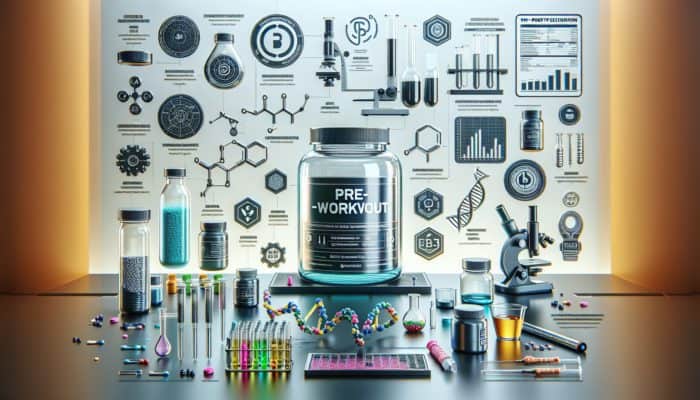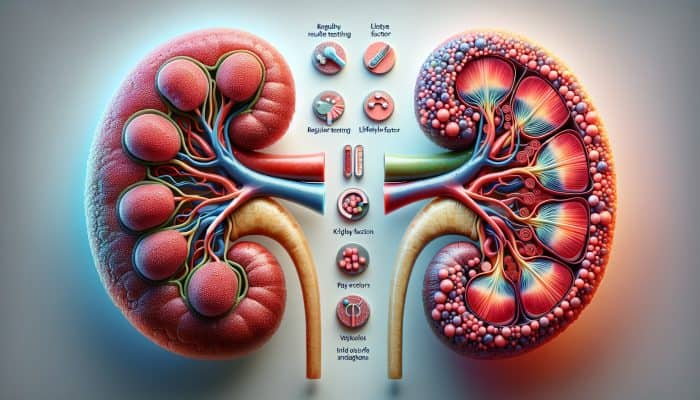Actionable Tips for Your First Acupuncture Experience: What to Know
Optimal Clothing Choices for a Comfortable Acupuncture Appointment

Choosing the right attire for your first acupuncture session is essential to ensure a comfortable and enjoyable experience. Opt for loose-fitting, comfortable clothing that allows your acupuncturist easy access to the treatment areas. The best choices include joggers or leggings paired with a casual t-shirt or blouse. It’s advisable to steer clear of tight-fitting clothes or belts, as they can limit your movement and lead to discomfort during your session. As acupuncturists often focus on the arms, legs, and back, wearing easily adjustable clothing will facilitate the treatment process.
Additionally, pay attention to the temperature of the treatment room, as some clinics may have cooler environments. Bringing a lightweight sweater or blanket can be a thoughtful choice to keep you warm and cozy throughout your session. Remember, the ultimate goal is to relax and focus on your treatment, and your clothing should promote this objective.
Effective Mental Preparation Strategies for Your Acupuncture Session
Taking the time to mentally prepare for your first acupuncture session can greatly enhance not only your overall experience but also the effectiveness of the treatment itself. Engaging in relaxation techniques, such as mindfulness meditation or deep breathing exercises, can significantly ease any anxiety you might be feeling. Before your appointment, dedicate a few moments to ground yourself by concentrating on your breath—inhale deeply through your nose and exhale slowly through your mouth. This practice is a powerful way to quiet your mind and alleviate any tension.
In addition, listening to soothing music or ambient sounds prior to your appointment can create a calming atmosphere and foster a tranquil mindset. Curate a playlist of your favorite relaxing tracks to enjoy during your journey to the clinic. This type of mental preparation not only calms your thoughts but also creates a positive tone for the upcoming session.
Important Pre-Appointment Guidelines to Follow for a Smooth Session
Your acupuncturist may provide you with specific pre-appointment guidelines that are important to follow. Common recommendations include avoiding caffeine and heavy meals for several hours leading up to your appointment. Caffeine can heighten feelings of anxiety and alter your body’s response to treatment, while a heavy meal may cause discomfort during your session. Arriving a few minutes early is also beneficial, allowing you to settle in and acclimatize to the environment, which is crucial for relaxation.
Furthermore, take note of any recent changes in your health since your last visit, as this information is crucial for your acupuncturist to tailor your treatment effectively. This proactive approach contributes significantly to enhancing the overall efficacy of your acupuncture experience.
Essential Items to Bring for Your Acupuncture Appointment

As you prepare for your first acupuncture session, it’s wise to bring along any relevant medical records or a detailed list of medications you are currently taking. This information is critical for your acupuncturist as it provides essential insights into your health history and any potential contraindications for treatment. If you have specific health concerns or conditions, being open and honest about these is essential for effective treatment.
A notebook can also be extremely useful for jotting down notes after your session. You may want to record your feelings during the treatment, any questions that arise, or any specific instructions given by your acupuncturist regarding follow-up care. This practice not only allows you to track your progress but also serves as a valuable reference for future treatments.
What to Expect: Duration of Your Acupuncture Session
Typically, an acupuncture session lasts between 30 and 60 minutes, depending on individual needs and the complexity of the treatment being administered. Your acupuncturist will clarify the expected duration during your initial consultation. The session usually begins with a thorough assessment where your acupuncturist will ask about your health history and specific concerns.
Following the assessment, the actual acupuncture treatment involves the careful insertion of fine needles at various points on the body. The amount of time the needles remain in place can vary, but most practitioners will ensure that you feel comfortable and relaxed throughout the process. Don’t hesitate to voice any concerns or questions you may have regarding the duration or nature of your session with your acupuncturist.
Comprehensive Overview of Acupuncture Practices in the UK
Understanding Acupuncture: Definitions and Mechanisms
Acupuncture is a traditional Chinese medicine technique that entails the precise insertion of thin needles into specific points throughout the body. This ancient practice has roots that extend back thousands of years and is grounded in the principle of balancing the body’s energy, known as ‘qi’ (pronounced “chee”). By targeting specific meridian points, acupuncture aims to alleviate pain and address a myriad of conditions.
In the UK, acupuncture is increasingly acknowledged as a valuable therapeutic option. Many practitioners integrate it with other treatment modalities, appreciating its holistic approach to health. It is employed not only for pain relief but also for a diverse range of health conditions, making it an appealing choice for individuals seeking alternative or complementary therapies to enhance their overall well-being.
How the Acupuncture Process Works: A Detailed Explanation
Acupuncture operates by stimulating the body’s natural healing mechanisms, effectively fostering balance and harmony within. It is believed that the insertion of needles at various points along meridians encourages the flow of qi, which can become obstructed due to stress, injury, or illness. This stimulation can lead to the release of endorphins and other neurochemicals, enhancing the body’s inherent ability to heal itself.
Practitioners often customize treatment plans based on individual diagnoses and symptoms. During a session, patients may experience a range of sensations, including mild tingling or warmth, as the needles take effect. Many individuals find the experience deeply relaxing, with some even drifting off during their session. This response highlights the effectiveness of acupuncture in promoting a state of profound relaxation, which can be beneficial for both physical and mental health.
Acupuncture Regulations in the UK: What You Need to Know
Yes, acupuncture is regulated in the UK, with the British Acupuncture Council (BAcC) serving as the primary self-regulatory body for practitioners of traditional acupuncture. The BAcC ensures that practitioners adhere to high standards of training and practice, providing reassurance to patients seeking treatment. Acupuncturists typically must complete extensive training and gain practical experience before becoming eligible for registration.
Moreover, many acupuncturists are also trained in Western medical principles, allowing them to integrate both approaches into their practice. This dual understanding enhances the safety and effectiveness of acupuncture, making it a reliable option for patients. When seeking treatment, it is advisable to confirm that your practitioner is a member of the BAcC or another reputable organization.
Valuable Advice for First-Time Acupuncture Patients
What to Anticipate During Your Acupuncture Session
During your initial acupuncture session, you can expect a thorough consultation that explores your health history and specific concerns. This comprehensive assessment allows your acupuncturist to tailor the treatment to your unique needs effectively. After the consultation, the practitioner will identify suitable acupuncture points based on your condition. Typically, these points are located along the meridians that correspond to your areas of concern.
Once the needles are inserted, you may feel a variety of sensations, from a slight prick to a mild tingling feeling. It’s important to remember that acupuncture is generally painless, and any discomfort experienced is typically brief. Most patients find the experience quite calming, often leading to a state of tranquility that enhances the therapeutic effect. After the session, you will likely have the opportunity to discuss your experience and any observations with your acupuncturist, which is an integral part of the process.
Strategies to Maximize the Effectiveness of Your Acupuncture Treatment
To fully harness the benefits of acupuncture, it is crucial to focus on both mental and physical preparation. Mentally, engaging in relaxation techniques such as deep breathing exercises or meditation can set you up to approach your session with a calm and open mindset. Physically, maintaining a balanced diet and ensuring proper hydration before and after your appointment can significantly enhance the treatment’s effectiveness.
Additionally, it is advisable to avoid alcohol and excessive sugar in the days leading up to your session, as these can negatively impact your body’s ability to respond to treatment. After your appointment, allow yourself ample time to rest and absorb the benefits of the session; this might involve taking a short nap or engaging in gentle activities that promote relaxation, such as a leisurely walk. Discussing dietary considerations with your acupuncturist can provide further personalized insights to help you optimize your treatment plan.
Possible Side Effects of Acupuncture: What to Expect
While acupuncture is typically regarded as safe, there are some mild side effects that new patients should be aware of, such as mild soreness or bruising at the needle insertion sites. These effects are generally temporary and manageable. If you encounter soreness, applying a warm compress to the area can offer relief. It’s also crucial to communicate with your acupuncturist about any discomfort experienced during the session, as they can adjust the treatment as needed to enhance your comfort.
In rare cases, individuals may experience dizziness or fainting, especially if they are anxious or have not eaten sufficiently before the session. To mitigate these effects, ensure you have a light snack before your appointment and remain well-hydrated. If you have any concerns regarding side effects or if you experience anything unusual, always consult your acupuncturist or seek additional medical advice.
Uncovering the Benefits of Acupuncture for Your Health
How Acupuncture Effectively Aids in Pain Management
Acupuncture is widely recognized for its effectiveness in pain relief. It proves especially beneficial for individuals suffering from chronic conditions such as back pain, migraines, and arthritis. By targeting specific points associated with pain pathways, acupuncture can significantly alleviate discomfort and even lessen the need for medication.
Numerous patients report a notable decrease in pain levels following treatment, often enabling them to resume their daily activities with greater ease and comfort. This method is supported by various case studies showcasing successful pain management outcomes. For instance, a patient dealing with chronic back pain may find substantial relief after just a few sessions, allowing them to engage in activities they had previously avoided due to discomfort.
Acupuncture’s Role in Enhancing Mental Health
Emerging studies indicate that acupuncture can greatly enhance mental health by alleviating symptoms of anxiety, depression, and stress. The technique promotes relaxation and balances hormones, contributing to improved mood and overall mental well-being. Many practitioners advocate for acupuncture as a complementary treatment alongside more conventional mental health therapies.
Patients frequently report feeling calmer and more centered after their sessions. This psychological benefit can be especially advantageous for those grappling with high levels of stress or anxiety, equipping them with effective tools to cope. Regular acupuncture sessions may therefore serve not only as a therapeutic intervention but also as a valuable preventive measure against mental health issues.
Acupuncture: An Effective Treatment for Various Health Conditions
Acupuncture has been utilized for a broad spectrum of conditions beyond pain management. It is often integrated into a holistic approach for addressing digestive issues, insomnia, and even fertility challenges. By targeting the underlying imbalances within the body, acupuncture promotes overall health and wellness.
For example, individuals suffering from digestive disorders may experience notable improvements in gut health after a series of acupuncture treatments. Similarly, those struggling with insomnia may find their sleep patterns stabilizing and anxiety diminishing, leading to more restful nights. These outcomes reinforce the versatile nature of acupuncture as a complementary therapy, enhancing the overall quality of life for many patients.
Can Acupuncture Boost Your Immune Function?
Research suggests that acupuncture may enhance immune system function by stimulating specific points that increase white blood cell activity. This stimulation can improve the body’s overall resistance to illness, making acupuncture a viable option for those seeking to bolster their immune health.
Patients who incorporate acupuncture into their health routines often report fewer instances of illness and quicker recovery times when they do become unwell. This immune-boosting effect can be particularly beneficial during colder months when colds and flu are prevalent. Regular sessions may contribute to a more robust immune response, ultimately supporting long-term health and well-being.
Guidelines for Selecting the Right Acupuncturist in the UK
Key Factors to Consider When Choosing a Qualified Practitioner
Choosing a qualified acupuncturist is essential to ensuring a safe and effective treatment experience. Look for practitioners who are registered with the British Acupuncture Council (BAcC) or other reputable organizations. Registration with these bodies guarantees adherence to high professional standards and ethical practices.
- Verify their formal qualifications in acupuncture.
- Investigate their experience with specific conditions.
- Read patient reviews and testimonials for valuable insights.
- Ensure they engage in continuous professional development.
When selecting a practitioner, consider arranging a brief consultation to discuss your needs and evaluate their treatment approach. This initial interaction can help establish trust and comfort—both crucial for a successful acupuncture experience.
Important Questions to Ask Your Acupuncturist
During your meeting with your acupuncturist, there are several essential questions you should consider asking. Inquire about their training and experience with your specific condition. Understanding their background not only informs you about their expertise but also aids in crafting a tailored treatment approach.
Ask about the number of sessions they recommend based on your condition and what you can expect during the treatment process. Discuss their approach to treatment, including any techniques or methods they utilize. This dialogue will help ensure that you feel comfortable and informed, enabling you to actively participate in your healthcare journey.
Financial Aspects and Insurance Considerations for Acupuncture
The cost of acupuncture sessions can vary significantly based on factors such as location, practitioner experience, and treatment complexity. Some private health insurance plans may cover acupuncture treatments, so it’s advisable to verify your coverage with your provider. Always discuss fees upfront with your acupuncturist to avoid any unexpected surprises later on.
Consider investing in a package deal if you plan to attend multiple sessions, as many practitioners offer discounts for bulk bookings. This approach not only makes the treatment more affordable but also encourages consistent care, which is vital for achieving long-term benefits.
Ensuring a Comfortable and Safe Treatment Environment
Creating a comfortable and safe treatment environment is vital for a positive acupuncture experience. Before your session, check the cleanliness and hygiene of the clinic. A reputable practitioner should utilize sterile, single-use needles and maintain high standards of cleanliness throughout the treatment space.
Discuss any personal comfort needs with your acupuncturist before beginning treatment. This may include preferences regarding room temperature or background music. Your comfort during the session can significantly influence your relaxation and overall experience, allowing you to fully benefit from the advantages offered by acupuncture.
Practical Strategies for First-Time Acupuncture Patients
Actions to Enhance Your Acupuncture Experience
To enrich your acupuncture experience, it is essential to adopt a holistic approach that includes maintaining a healthy lifestyle. Regular physical activity, a balanced diet, and adequate hydration can all contribute to the effectiveness of acupuncture treatments. Staying well-hydrated before and after your sessions can help your body respond more effectively to the treatment.
After your appointment, be sure to follow any post-session care instructions provided by your acupuncturist. This may include resting, avoiding strenuous activities, and drinking plenty of water. Engaging in gentle mindfulness practices or light stretching can further enhance your relaxation and help integrate the benefits of the session. These strategies not only maximize the immediate effects of acupuncture but also support your overall health and wellness journey.
Essential Practices for Post-Session Care to Maximize Benefits
Post-session care is crucial for maximizing the benefits of acupuncture. After your treatment, it’s advisable to rest and relax, allowing your body to integrate the effects of the acupuncture. Staying well-hydrated post-session is also vital, as proper hydration supports your body’s natural healing processes.
It is wise to avoid strenuous activities for the remainder of the day to help maintain the relaxed state induced by the treatment. Listen to your body; if you feel fatigued, give yourself permission to take a break. Follow any specific advice or recommendations from your acupuncturist, as they will tailor their guidance based on your unique needs and treatment plan.
Recommended Frequency for Follow-Up Sessions for Optimal Results
The frequency of follow-up sessions largely depends on your individual condition and response to treatment. Some patients may initially benefit from weekly sessions, while others may find that bi-weekly or monthly visits are sufficient. Your acupuncturist will evaluate your progress and recommend a personalized schedule tailored to your specific needs, ensuring optimal outcomes for your health.
Regular follow-up sessions can help maintain the benefits achieved through initial treatments, contributing to long-term health and wellness. Consistency is key; the more regularly you engage with acupuncture, the more likely you are to experience sustained relief and improved health outcomes.
Incorporating Acupuncture into Your Holistic Health Routine
Acupuncture: A Vital Component of a Holistic Health Plan
Acupuncture can seamlessly fit into a holistic health plan, complementing other treatments such as massage, chiropractic care, and dietary adjustments. Its holistic approach addresses not only physical symptoms but also mental and emotional well-being, contributing to overall wellness and disease prevention.
For individuals seeking a comprehensive approach to health, acupuncture can serve as a valuable tool for managing stress, promoting relaxation, and enhancing overall health outcomes. By addressing the interconnected aspects of health, acupuncture supports a balanced lifestyle and empowers patients to take charge of their well-being.
How Acupuncture Integrates with Other Therapeutic Approaches
Acupuncture can harmoniously coexist with conventional medicine and other complementary therapies. This integrative approach enhances the effects of treatments, facilitating more effective management of chronic conditions. For instance, patients undergoing chemotherapy may discover that acupuncture helps alleviate side effects, thereby improving their overall quality of life.
Additionally, acupuncture can support other forms of therapy by fostering relaxation, reducing anxiety, and promoting emotional stability. Patients often report feeling more centered and balanced following acupuncture treatments, enabling them to engage more fully with other therapeutic modalities. This synergy underscores the versatility of acupuncture as part of a broader health strategy.
Long-Term Benefits of Regular Acupuncture Treatments
Engaging in regular acupuncture can yield a diverse range of long-term benefits, including improved overall health, enhanced stress management, and reduced reliance on medication for chronic conditions. Patients frequently report a heightened sense of balance and well-being as they incorporate acupuncture into their health routines.
Long-term acupuncture users may also experience greater immune function and overall vitality. As the body adapts to acupuncture, many individuals find their symptoms gradually diminish over time, leading to an improved quality of life. This preventive aspect of acupuncture not only supports immediate relief but also contributes to sustained health and well-being.
Determining the Optimal Frequency for Acupuncture Sessions
The frequency of acupuncture sessions depends on your health objectives and specific condition. Many patients start with weekly sessions and transition to bi-weekly or monthly appointments for maintenance. This schedule allows for consistent support while accommodating the individual’s evolving needs.
Your acupuncturist will collaborate with you to create a personalized treatment plan that considers your specific goals and health status. Regular check-ins will help ensure that the frequency of your sessions remains aligned with your needs, promoting optimal health outcomes.
What to Expect During Your Initial Acupuncture Visit
Your first acupuncture visit will include a detailed consultation aimed at discussing your health history and concerns. This assessment is crucial for your acupuncturist to tailor the treatment plan to your unique needs. Following the consultation, the acupuncture treatment will commence, typically involving the insertion of needles at specific points determined by your condition.
Most patients find the experience very relaxing, frequently reporting feelings of peace during and after the session. The acupuncture needles are extremely fine, and many individuals feel little to no discomfort upon insertion. After the session, your practitioner will likely discuss your experience and any observations to ensure you leave feeling informed and supported.
Frequently Asked Questions About Acupuncture: Your Concerns Addressed
What should I expect during my first acupuncture appointment?
During your initial appointment, you will undergo a consultation that covers your health history, followed by the treatment itself. Expect a serene environment where you may feel relaxed and at ease throughout the process.
Is acupuncture painful?
Acupuncture is generally not painful, as the needles are very fine, and any sensation is typically mild. Many patients report feeling relaxed during the treatment.
How many sessions will I need?
The number of sessions varies based on individual conditions. Your acupuncturist will create a personalized plan tailored to your specific needs and goals.
Can acupuncture help with anxiety and stress?
Absolutely! Acupuncture has been shown to assist in alleviating symptoms of anxiety and stress by promoting relaxation and restoring balance within the body.
Are there any side effects associated with acupuncture?
Common side effects may include mild soreness or bruising at the needle insertion sites. These effects are typically temporary and easily managed.
How does acupuncture work?
Acupuncture functions by stimulating specific points on the body to balance the flow of energy, encouraging the body’s natural healing processes and promoting overall well-being.
Can acupuncture be used alongside other treatments?
Absolutely! Acupuncture can complement other therapies, including conventional medicine and alternative treatments, thereby enhancing their effectiveness.
How should I prepare for my first acupuncture session?
Wear comfortable clothing, avoid heavy meals and caffeinated drinks, and consider practicing relaxation techniques to ease any pre-appointment anxiety.
What qualifications should I look for in an acupuncturist?
Seek practitioners who are registered with the British Acupuncture Council, as well as those with relevant qualifications and positive patient reviews.
Can acupuncture effectively treat chronic pain conditions?
Yes, acupuncture is widely utilized for chronic pain management, including conditions such as migraines, back pain, and arthritis, often leading to reduced reliance on medication.
Connect with us on Facebook!
The Article Tips for First-Time Acupuncture Patients: UK Guide Was First Published On https://acupuncture-frome.co.uk
The Article Acupuncture Tips for First-Time Patients in the UK Was Found On https://limitsofstrategy.com





























